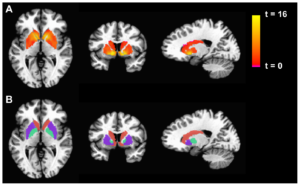
Figure 1: Examples of emotional expressions
Source: Andrea Piacquadio from Pexels
Raising two fingers to make a peace sign can be seen as a cute gesture across East Asia. Turn those fingers inwards though, and you might cause some trouble in the UK. Kissing on both cheeks between strangers is a salutatory greeting in France, but if you try it in the US you’re likely to be met with confusion or even hostility.
There exist a plethora of cultural relativisms that can make cross-cultural conversations difficult. A certain tone of voice or a raise of an eyebrow can change the entire meaning of a social interaction depending on the cultural context. When conversing, humans constantly scan the body language and facial expressions of others, searching for clues about how the other person is feeling and receiving feedback on the direction of the interaction. Any world traveler can attest to the difficulty of being placed in a new, unknown environment where these signals have shifted beyond their knowledge.
Despite these apparent differences, new research from a group of scientists at University of California, Berkley and Google Research has shown that human expression may have more in common between cultures than previously thought. The research, published in Nature Magazine, points to the universality of human emotional expression by showing that similar facial expressions occur worldwide in similar contexts (Cowen et al., 2020).
The researchers trained a Deep Neural Network (DNN), a form of machine learning algorithm, to analyze the fine-grained movements of a face and identify it as one of 16 emotions. By training it on almost 200,000 YouTube videos that had been labelled previously by humans, the DNN could accurately predict emotional expression with no evidence of regional or ethnic bias. They then used the DNN to analyze a staggering 6 million videos from 144 countries (Cowen et al., 2020). Each of the videos displayed different kinds of human social activity, from weddings to martial arts to fireworks displays. They then went on to trace correlations between the patterns of facial movement and situational contexts. Quite evidently, the researchers found connections between the two, with certain emotional expressions occurring more frequently with specific events; for example, an expression of awe paired with displays of fireworks, doubt paired with police presence, and contentment paired with wedding ceremonies.
The use of machine learning for research on emotion in a global context is particularly exciting. In the past, research in the field of facial recognition has faced issues of bias derived from social and cultural norms, as well as racial and ethnic bias. Traditionally, when researching affective expression, most experiments consist of asking participants to label human faces with an emotion. However, this technique has a few key drawbacks. First, it necessitates smaller sample sizes given the time-consuming nature of a labelling task for humans. It is also linguistically biased, as many emotional descriptors do not have exact translations into other languages. Furthermore, these faces are often devoid of context, meaning that many blanks must be filled in by the participants which can give rise to more cultural and personal bias (Cowen et al., 2020). To mitigate this problem, the researchers used content from the web. Thus, the DNN could label the cultural context by scanning the video title, description and pixels to determine the surrounding situation. Given the constraints of this old style of research, the authors of this study opted for a novel, artificial intelligence-based approach that allowed them to analyze far more content and place the emotion expressions within various cultural contexts.
After finding the expression-context correlations in US settings, the researchers turned their comparative analysis to international videos and looked for the rate of similarity in these context-specific expressions between different world regions. They found that across diverse geographic regions, there is a 70% overlap in facial expressions and specific context. This means that the facial expressions that people produced in the studied contexts were 70% the same across the different world regions. From expressions of triumph in sport to contentment at weddings, almost three quarters of these emotional expressions were identified as the same across the world. Their results also pointed towards a higher level of similarity in facial expressions between neighboring regions, suggesting that local culture may also play a role in shaping emotional expression (Cowen et al., 2020). This could be due to a higher incidence of cross-cultural interactions occurring more frequently in nearby geographical locations.
These findings lead us to recognize our commonalities across the globe and point to our shared evolution as emotional and expressive beings. In an increasingly connected world, individuals can take solace in the fact that people seem to laugh and cry at the same things in the same way.
References
Cowen, A. S., Keltner, D., Schroff, F., Jou, B., Adam, H., & Prasad, G. (2020). Sixteen facial expressions occur in similar contexts worldwide. Nature, 1–7. https://doi.org/10.1038/s41586-020-3037-7
Related Posts
The Positives of Plushies: Stuffed Animals Have Benefits for Children and Adults
Figure: A young girl sleeps with a teddy bear in...
Read MoreHow Genetic Engineering Can Responsibly Revolutionize Healthcare Treatment
Source: iStock At just 3 months old, Victoria Gray was...
Read MoreRecent Study Conducted by Duke University Researchers Reveals Critical Limitation of fMRI Measurements
Figure 1: fMRI is used to display differences in basal...
Read MoreGeorgina Gonzalez




Comments are closed.